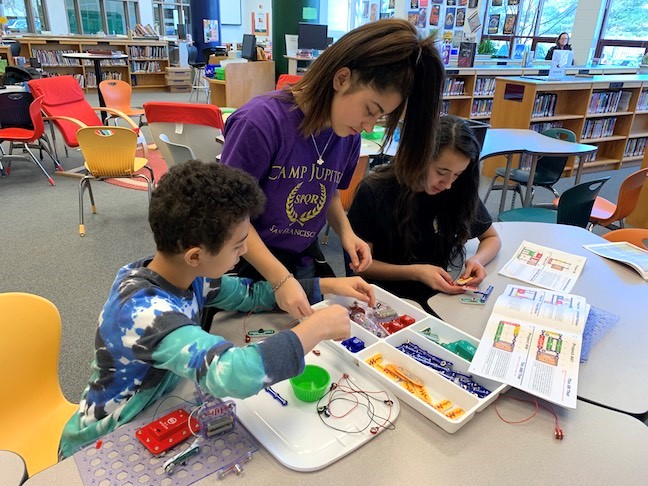“You can’t have your cake and eat it too.”
In addition to being one of the most confusing idioms in the English language, it’s also been around longer than most. This 16th-century phrase continues to be one of the most used ways to say, “you cannot have two incompatible things.” You must choose between two things that cannot co-exist.
You may be wondering what “having your cake and eating it too” has to do with creating learner-centered, equity-focused learning environments for young people.
It’s simple. There simply isn’t enough evidence that you can have a learner-centered education system (having your cake) while perpetuating the current system that hasn’t substantively changed since its 1894 inception. A current system that, while extremely effective at its purpose, is inherently inequitable because it measures all learners in the same way as if they were widgets (eating it too).
The chief elements of a learner-centered system center on the individual learner, not the machine of the system.
David Cook
Having Your Cake
It’s widely agreed among educators, civil rights advocates, and child welfare experts that the U.S. education system is neither equitable nor does it sufficiently address the needs of all learners. What is needed is a system that sets each learner up for success according to their unique needs. Only then will we have real equity. That is when we know we have a genuine “learner-centered” system.
Education Reimagined is an organization empowering educators and stakeholders in this movement. At Education Reimagined the premise of a learner-centered system is fundamental.
“We (Education Reimagined) stand for learner-centered education because it offers the possibility of true liberation and equity in education. At its core, learner-centered education honors and values the humanity and dignity of each child—seeing them as unique, curious, wondrous, and capable. It enables each young person to discover and bring forth their unique talents and passions in ways that contribute to their community and society. And it empowers every educator, family, and community to make the difference they are committed to making for young people.”
This desire for a true learner-centered system is our “cake.”
The chief elements of a learner-centered system center on the individual learner, not the machine of the system:
| Element
|
Learner-Centered Systems Look This Way
|
Diversity, Equity, and Inclusion |
Diversity, equity, and inclusion practices achieve success by focusing on the individual learner versus a population group, recognizing all learners are unique. Identified needs of each learner are supported because of the learner’s uniqueness versus being categorized as part of a particular group.
|
Rigor, Relevance, and Relationships |
It is recognized that rigor and relevance aren’t achieved by increasing the difficulty of student work. Rigor and relevance are established when each teacher identifies the unique combination of talents/strengths, interests, and other crucial needs of each learner. A strong teacher-learner relationship is imperative to success.
|
Assessment |
Assessments serve instruction, not the other way around.
|
Accountability |
Accountability moves from a compliance-based system to a best-benefits system. The system is accountable for how it meets the learning needs of the individual.
|
In these systems, teachers are more deeply engaged in teaching because learners are more deeply engaged and focused. Teachers have increased flexibility to ensure their learners’ mastery of knowledge, skills, and dispositions.
Eating It Too
It might surprise you to know that the other piece of cake – our current system in this context – is highly efficient in its intended purpose. In fact, it’s probably one of the most effective and efficient systems ever. It’s doing exactly what it was designed to do, which was:
- Teach all learners as if they are the same;
- Assess them all as if they were the same; and
- Make decisions about future instruction based upon these single-minded instructional and assessment practices.
In addition to doing a great job at meeting its goals, it’s been the norm in the U.S. since the Committee of Ten created it in 1894. That’s not a typo. You read it right. Our system has been the accepted norm for 128 years.
What else can you name in our world today that looks the same as it did 128 years ago?
Yeah, I couldn’t come up with anything good either.
If we use a similar chart like the one above, you can see how the current system is highly effective at accomplishing its goals.
| Element
|
The Current System Looks This Way
|
Diversity, Equity, and Inclusion |
Diversity, equity, and inclusion are achieved by administering statewide summative assessments followed by instituting population group-based “improvement” programs. The goal is to reduce the “gap” between the overall scores of groups versus other groups. Since meaningful value isn’t placed on individual learners, it efficiently does its job of measuring how particular labeled groups of learners perform on a one-size-fits-all, moment-in-time assessment.
|
Rigor,
|
Rigor and relevance are established by increasing either the difficulty or quantity of work for the group of learners seen as in the gap. Millions of dollars are spent each year despite the lack of evidence it works. Attempts to develop relationships occur sometimes after students are categorized based on their assessment performance.
|
Assessment |
All instruction serves the assessment. Teach the test.
|
Accountability |
All accountability is compliance-based, focused on achieving a score to ensure compliance with federal and state law.
|
As you can see from the chart, it is assumed all learners are alike and designed instruction and curriculum are to be delivered one way. Assessment is performed one way as if evaluating widgets on a factory assembly line. Regrettably, the sorting of learners based on their assessment performance, rather than what they have learned, occurs every day in this country. This system doesn’t have a desire to KNOW each learner.
There have been efforts in the past to change the system. In 1918, the National Education Association commissioned a study and replaced the recommendations of the Committee of Ten with the “Seven Principles of Secondary Education.” Those seven principles were about educating the whole child versus academic pursuits alone. Sadly, things didn’t change. Our system continues to follow the recommendations of the Committee of Ten above the Seven Principles.
Bottom line: There is nothing “broken” about the current system.
It’s Time to Choose Your Cake
Here’s the thing. The idiom is right. You CANNOT have your cake and eat it too. You must choose between a genuine and substantive equity-facing, learner-centered system that puts its effort and money where its mouth is OR a system that is designed to create widgets, fraught with inequity born of its preference to measure all learners the same while giving lip service to acknowledging every learner is unique.
We’ve tried far too long to serve two ideals. It’s time to choose the cake that serves everyone based upon their unique and individual talents, needs, and strengths.
Let’s get baking.
This article was originally published by Getting Smart.

